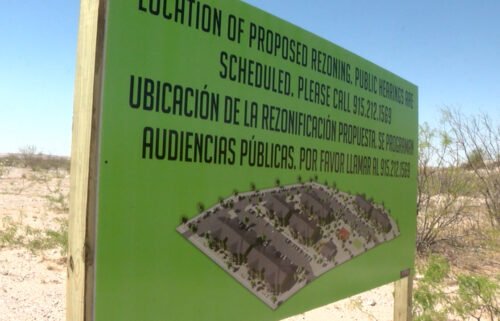California governor proposes extending nuclear plant’s life

By MICHAEL R. BLOOD
Associated Press
LOS ANGELES (AP) — California Gov. Gavin Newsom on Friday proposed extending the life of the state’s last operating nuclear power plant by five to 10 years to maintain reliable power supplies in the climate change era.
The proposal to keep the Diablo Canyon Nuclear Power Plant running beyond a scheduled closing by 2025 gave new urgency to a decades-long fight over the seismic safety of the site. And critics depicted Newsom’s plan as a huge financial giveaway for plant operator Pacific Gas & Electric, while warning it would gut state environmental safeguards.
Newsom’s draft proposal includes a potential forgivable loan for PG&E for up to $1.4 billion and would require state agencies to act quickly to clear the way for the reactors to continue running.
The seaside plant located midway between Los Angeles and San Francisco produces 9% of the state’s electricity. The proposal says its continued operation beyond 2025 is “critical to ensure statewide energy system reliability” as climate change stresses the energy system.
“The governor has been clear for months about the potential need to extend the life of Diablo Canyon,” Newsom spokesman Anthony York said.
He added that Newsom has stressed the need to keep all options on the table to maintain reliable power and that “this proposal reflects the continued need to keep that flexibility.”
Newsom’s proposal amounts to an attempt to unspool a complex 2016 agreement among environmentalists, plant worker unions and the utility to close the plant by 2025. The joint decision also was endorsed by California utility regulators, the Legislature and then-Democratic Gov. Jerry Brown.
Environmental groups depicted the move as a “dangerous” betrayal of the 2016 pact.
“Legislators should reject it out of hand,” said a joint statement from Friends of the Earth, the Natural Resources Defense Council and Environment California.
Ralph Cavanagh of the Natural Resources Defense Council said the plan would provide sweeping exemptions from environmental rules, including the California Environmental Quality Act.
“This draft was prepared by someone with little understanding of California energy policy or history,” Cavanagh said.
David Weisman, legislative director of the Alliance for Nuclear Responsibility advocacy group said Newsom’s blueprint would “give PG&E over $1 billion in loans at below the interest rate even state agencies charge among themselves, and it’s completely forgivable.”
PG&E’s service area is concentrated in Northern California and Weisman asked: “What are taxpayers in Southern California getting out of this?”
The draft proposal was released ahead of a California Energy Commission meeting on the state’s energy needs and the role that the nuclear plant could play in maintaining reliable service.
Newsom clearly wants to avoid a repeat of August 2020, when a record heat wave caused a surge in power use for air conditioning that overtaxed California’s electrical grid. That caused two consecutive nights of rolling blackouts for the state, affecting hundreds of thousands of residential and business customers.
The Newsom administration is pushing to expand clean energy, as the state aims to cut emissions by 40% below 1990 levels by 2030. Nuclear power doesn’t produce carbon pollution like fossil fuels, but leaves behind waste that can remain dangerously radioactive for centuries.
The California Legislature has less than three weeks to determine if it will endorse the plan and attempt to extend the life of the plant — a decision that would be made amid looming questions over the costs and earthquake safety risks.
The legislative session shuts down Aug. 31 — when all business is suspended — and only a rare special session called by Newsom could provide a longer period to consider the move.
The Democratic governor, who is seen as a possible future White House candidate, has urged PG&E for months to pursue a longer run beyond a scheduled closing by 2025, warning that the plant’s power is needed as the state transitions to solar, wind and other renewable sources of energy.
Those raising questions with Newsom include state Sen. John Laird, a Santa Cruz Democrat whose district includes the plant.
With an extended run, “Who pays, and is there fairness in who pays?” Laird asked in an interview. “There have been additional earthquake faults discovered near the plant, and seismic upgrades were never totally completed. Will they address that?”
Laird outlined other issues that include who would pay for maintenance that has been put off because the plant is scheduled to close by 2025, and whether there is time for PG&E to order and receive additional radioactive fuel — and casks to store spent fuel — to keep operating.
“We are under a tight timeframe,” Laird added. “That begs the question of could they do everything it needs to be extended by 2025?”
PG&E CEO Patricia “Patti” Poppe told investors in a call last month that state legislation would have to be enacted by September to open the way for the utility to reverse course.
PG&E, which has long said the plant is seismically safe, has not said much about whether it will push to extend operations beyond 2025.
The company is assessing that possibility while continuing to plan for closing and dismantling the plant “unless those actions are superseded by new state policies,” PG&E spokesperson Suzanne Hosn said in a statement.
Construction of the Diablo Canyon plant began in the 1960s and critics say potential shaking from nearby earthquake faults not recognized when the design was first approved could damage equipment and release radiation. One nearby fault was not discovered until 2008.
PG&E also would have to obtain a new operating license from the Nuclear Regulatory Commission to run the plant beyond 2025.
Newsom’s push for a longer run for the reactors doesn’t square easily with his assessment in 2016, when as lieutenant governor he supported the closure agreement as part of the State Lands Commission.
Seismic issues at the plant “are not insignificant concerns,” he said at the time. “This is not the preeminent site if you’re … concerned about seismic safety.”

